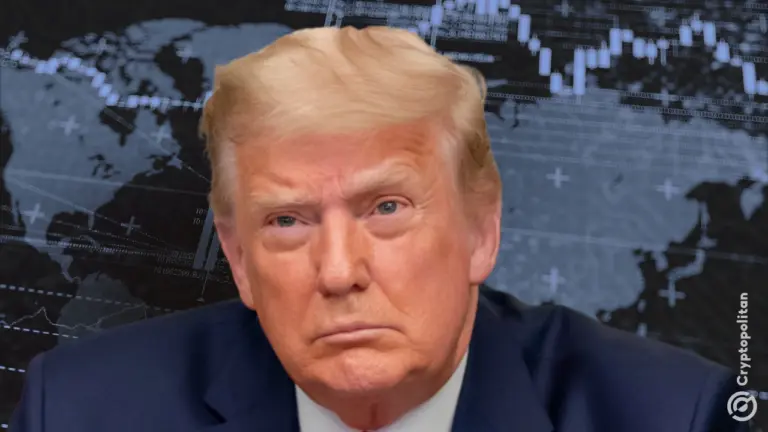The dawn of Ethereum is approaching, and $10,000 is not a dream
The mountains are steep and the waters are deep, seemingly with no way out; yet amidst the dark willows and blooming flowers, there lies another village.
Author: Anderson Sima, Foresight News
Since the beginning of 2024, if many cryptocurrency believers were to create a list of the most disappointing crypto assets, Ethereum would undoubtedly top the list.
In the last cycle, Ethereum shone brightly with new applications like DeFi and NFTs, reaching a historical high of $4,800, creating a wealth code with over 20 times growth. As Bitcoin surged ahead, people's expectations for Ethereum, the second-largest cryptocurrency, were also at an all-time high.
However, in the new cycle, while Bitcoin has surpassed $90,000, Ethereum has barely managed to stay above the $3,000 mark. After a brief surge to $4,000 at the beginning of the year, it even dropped to around $2,200, trapping many cryptocurrency believers who were eagerly awaiting Ethereum's rise. Even the usually savvy "Brother Sun" was among them, indicating that institutional investors are not immune either. Currently, the exchange rate of Ethereum to Bitcoin has fallen to a historical low of 0.034.
As the saying goes, "When the mountains are high and the waters are deep, one may doubt there is no way out, but there is always another village with dark willows and bright flowers."
I believe that the difficulties Ethereum is currently facing are an inevitable stage in the early development of the Web3 industry. While Bitcoin occupies a consensus stronghold in the realm of digital gold, Ethereum's vision of a world computer has encountered some structural contradictions, failing to resonate with its market value and unable to realize value expectations in the short term. However, I believe that all current difficulties are essentially paper tigers, and we are at the "dawn."
Ethereum's Dilemma
One essential difference between this cryptocurrency bull market and the previous two is that Ethereum has not led the wave of technological innovation. Compared to the ICO frenzy of 2017 and the DeFi Summer of 2020, the biggest highlight of this cycle is Meme culture, with most of the Meme community residing on Solana. The concepts of Layer2 and Restaking led by Ethereum have instead had some negative impacts on the Ethereum ecosystem.
Currently, while hundreds of Layer2 ecosystems have improved Ethereum's transaction experience and performance, they have also brought serious diversion issues. The reduced fees after the upgrade have also affected Ethereum's economic model and staking income. As ETH demand decreases and the burn rate falls short of expectations, inflation has begun to emerge, weakening its potential as a store of value. Meanwhile, Bitcoin has an irreplaceable appeal to institutional investors in the realm of value storage, making the newly launched Ethereum spot ETH a rather inconsequential presence.
On the other hand, Vitalik Buterin, as the community leader, has a rationalist temperament that deeply influences the entire ecosystem. Vitalik has a very grand vision for Ethereum's future development, and recently he has written several lengthy articles, conducting various studies on decentralization, security, and scalability for Ethereum.
However, from the community's perspective, some of these goals are overly idealistic and have a significant gap from current technological limitations and market expectations. At the same time, Vitalik's excessive influence in Ethereum's community governance and decision-making contradicts the ideal of decentralization, potentially leading to a decision-making process that is not sufficiently democratic and decentralized, with the community's voice being intentionally or unintentionally overlooked, making him seem particularly out of touch with the collective pursuit of wealth codes.
But isn’t that just Vitalik? The young man who cried over Blizzard's nerfing of the Warlock class and, in a fit of anger, entered the blockchain world to create Ethereum. If Vitalik were to become a New Money figure, constantly shouting for trades and lost in materialism, that might be the real crisis for the Ethereum community to worry about.
Dawn
Although the rise of Meme culture and Solana has attracted a lot of attention in this cycle, it does not mean that Ethereum has not made contributions to technological innovation. While Layer2 and Restaking may bring some challenges in the short term, in the long run, they provide a foundation for the sustainable development of the Ethereum ecosystem: by lowering transaction costs and increasing transaction speeds, Layer2 solutions make Ethereum more suitable for large-scale applications, which is crucial for attracting more users and developers. The staking mechanism encourages ETH holders to participate in network maintenance, enhancing the network's decentralization and security.
Regarding concerns about declining ETH demand and inflation, the Ethereum community and developers are actively seeking solutions: the community is discussing further adjustments to EIP-1559 to optimize the burning and issuance mechanisms of ETH.
At the same time, while Bitcoin has an appeal to institutional investors in terms of value storage, Ethereum offers a more comprehensive ecosystem, including smart contracts, DeFi, NFTs, and more. Ethereum and Bitcoin are complementary in many ways, rather than simply competing. Ethereum's versatility gives it a unique position in the cryptocurrency space, capable of supporting a wider range of application scenarios. This is something that no other public chain can compare to; the so-called "Ethereum killers" are due to Ethereum's own issues, not because other public chains can replace Ethereum.
Ethereum's hope lies in its continuous technological advancements, a strong developer community, and its adaptability to emerging market demands. However, in this cycle, Ethereum needs to focus on practical business applications that can be implemented in real-world development while emphasizing long-term sustainable growth, allowing each business application to become a stepping stone toward long-termism.
$10,000 is Not a Dream
I dare to predict that before the mid-term elections in 2026, Ethereum is likely to break through $10,000. Standard Chartered analyst Kendrick reiterated the bank's price target for the end of 2025, which is $200,000 for Bitcoin and $10,000 for Ethereum.
With the changing political landscape in the U.S. and Trump's support for the cryptocurrency market, a large amount of traditional capital is flowing into the cryptocurrency space. When traditional funds truly enter the crypto market, Ethereum, as a mainstream crypto asset with a spot ETF, is likely to attract more capital attention.
According to Farside Investors data, on November 12, the net inflow of the U.S. Ethereum spot ETF was $134.4 million, setting a historical record.
The launch of the Ethereum spot ETF provides important financial support for Ethereum's price growth. ETF investors in traditional markets are usually long-term investors, and the liquidity of spot ETFs increases market demand for Ethereum. For traditional investors who already hold Bitcoin, Ethereum, with its innovative potential and ecological effects, is also one of the best channels for entering the cryptocurrency space, further accelerating Ethereum's path to becoming a mainstream investment tool.
As for the Layer2 diversion issue, as the experience of the Ethereum mainnet gradually improves and competition settles down, we may see more L2 solutions integrated into Ethereum's mainnet. The smooth progress of this process will provide Ethereum with stronger traffic support and gas fee revenue, alleviating inflationary pressures and making the economic model of the Ethereum network more robust.
It is expected that in the first half of 2025, the integration of Ethereum's L2 will gradually enter a substantive implementation phase, with some Layer2 solutions being phased out. L2 integration will attract more developers and users back to the mainnet, thereby promoting the prosperity of the Ethereum ecosystem. During this phase, the price is expected to stabilize in the range of $3,000 to $5,000.
In the coming years, innovative applications such as PayFi and RWA are expected to continue to grow, especially with the enhancement of smart contract functionalities and the gradual improvement of L2 solutions, leading to the emergence of more complex financial applications. The birth of these applications is expected to reignite market demand for Ethereum.
For example, L2-based cross-chain liquidity integration and the maturation of on-chain financial derivatives markets will bring a large volume of transactions, further enhancing Ethereum's value. Interactions with traditional assets through RWA and payments are all potential application killers. It is expected that by the second half of 2025, these emerging applications will drive Ethereum's value to break through the $6,000 to $8,000 range.
At the same time, as influential figures like Trump, who support cryptocurrencies, gain more influence in the U.S., it is expected that the U.S. cryptocurrency market will gradually welcome a more relaxed regulatory environment. Additionally, the global economic slowdown and the risks of fiat currency inflation will lead more investors to consider digital assets as a hedging tool, further increasing demand in the cryptocurrency market.
If the U.S. and other major economies gradually relax regulations on cryptocurrencies in the next 1-2 years, and the demand from global investors to combat inflation and fiat currency depreciation increases, this will provide strong macro support for the rise in Ethereum's price. It is expected that in early 2026, under favorable market conditions, Ethereum may experience a significant price breakthrough, reaching the $10,000 mark.
Recently, Vitalik gave an exclusive interview to Foresight News, in which he mentioned, "The only surprise is that if no one knows about Ethereum as an asset, it cannot succeed. So from this perspective, Ethereum cannot completely be a background presence." Ethereum's ambition is known to some.
Disclaimer: The content of this article solely reflects the author's opinion and does not represent the platform in any capacity. This article is not intended to serve as a reference for making investment decisions.
You may also like
Trump turns on ‘buddy’ Putin over Ukraine, says he’ll slap Russia with sanctions now
Share link:In this post: Trump warned he may hit Russia with new sanctions after fresh missile attacks on civilians. Trump met with Zelenskyy in Rome and called the meeting productive, but gave no full details. Trump offered a peace deal that includes recognizing Crimea as Russian territory, which Zelenskyy rejected.
Trump’s economic and geopolitical failures took center stage at Pope Francis’ funeral
Share link:In this post: Trump’s economic and diplomatic tensions took over the spotlight at Pope Francis’ funeral. Trump met briefly with Zelenskyy, Macron, and Starmer during the service but made little progress. Trump skipped a second meeting with Zelenskyy and left Rome quickly after the Mass.

Elon Musk and Nobel laureates call for investigation into OpenAI’s nonprofit mission
Share link:In this post: Elon Musk called OpenAI restructuring plan the “scam of the century” after experts oppose it. Legal and AI experts have called on Attorneys General of Delaware and California to OpenAI core mission as a non-profit. Concerns about Open AI deviating from its non-profit origins is not limited to Musk.

Republicans propose shutting down US audit regulator PCAOB
Share link:In this post: Republicans plan to scrap the Public Company Accounting Oversight Board (PCAOB). The agency’s responsibilities could be pushed to the SEC if the lawmakers succeed in shutting it down. Republicans also want to pass a major tax bill that could change the non-profit sector.

